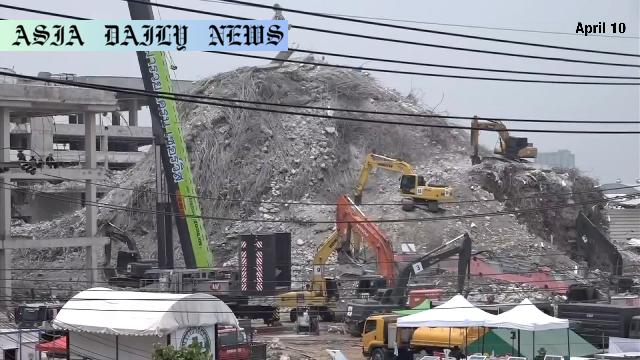Bangkok building collapse: Authorities suspect faulty materials from a Chinese contractor as a factor in the tragic disaster.

A Grim Incident Shakes Bangkok
A devastating high-rise collapse in Bangkok has left at least 89 people dead and seven others missing after a powerful earthquake struck central Myanmar on March 28. This tragedy, capturing global attention, has raised concerns over construction practices in the region. The building in question, an under-construction high-rise tower, succumbed to the force of seismic activity, creating a heart-wrenching scenario for workers and residents in the area. Many of the victims were migrant workers from Myanmar and neighboring countries, who dreamed of improved livelihoods but met with untimely deaths instead. While Thai authorities have concluded large-scale search operations for the missing, the pain persists, and investigations are underway to determine the cause of the disaster that has left families mourning their loved ones.
Poor Construction Practices Under Scrutiny
Authorities suspect that substandard construction materials, particularly low-quality steel, may have contributed to the collapse of the high-rise. Reports indicate that the steel used in the building may not have met the required strength standards. Adding to the controversy is a Chinese contractor allegedly operating in Thailand illegally, further complicating the investigation. By examining these elements, investigators hope to piece together the factors leading to this tragic collapse and establish accountability. This incident underscores the critical importance of adhering to construction safety standards, particularly in regions prone to seismic activity.
Devastating Human Impact
Beyond the technical and legal aspects, the collapse has inflicted profound human suffering. With seven people still missing and many more injured, the sense of loss among victims’ families is unprecedented. Workers from Myanmar and other countries who came seeking opportunities to support their families have now become victims of a preventable tragedy. The lingering uncertainty surrounding the fate of the missing adds to the emotional toll on families, urging authorities to prioritize recovery efforts and maintain regular communication with the affected communities.
Addressing Regional Construction Challenges
This disaster highlights the pressing need for regulatory reforms in the construction industry. As urbanization accelerates across Asia, ensuring the safety of construction practices becomes a critical priority. Thailand’s government must take this incident as a wake-up call to enforce stricter regulations and inspect ongoing projects. Similarly, international firms operating regionally should be held to higher accountability standards to prevent similar tragedies from occurring in the future. Investing in measures such as earthquake-resistant designs, third-party inspections, and strict compliance with safety codes is not just necessary but vital in averting potential disasters and safeguarding lives.
Commentary
The Human Toll of Neglect
Tragedies like the Bangkok high-rise collapse serve as a stark reminder of the devastating consequences of neglecting safety and regulatory compliance in construction practices. It is heartbreaking to think of the lives lost, the families shattered, and the dreams destroyed due to preventable oversights. The fact that many of the victims were migrant workers hoping for better lives only deepens the sense of injustice. Communities must demand accountability from those responsible, and governments must ensure that life safety never takes a backseat to cost-cutting or other economically driven priorities.
A Call for Industry Accountability
The alleged involvement of a non-compliant Chinese contractor brings an uncomfortable, but necessary, conversation into focus about the standards upheld by international firms operating in foreign jurisdictions. Across Asia and the developing world, construction booms often come with shortcuts and subpar practices. If this disaster teaches us one thing, it should be the importance of enforcing transparency and vetting all stakeholders thoroughly before projects are approved. The tragedy in Bangkok not only highlights regulatory deficiencies but also puts a spotlight on global industry practices in high-risk zones.
Moving Forward with Lessons Learned
This incident must act as a turning point for Thailand as well as neighboring nations. To prevent such horrors from occurring in the future, there must be stricter enforcement of laws, routine compliance monitoring, and improved cross-border cooperation when international contractors are involved. It is a collective responsibility, spanning governments, private industry, and the global regulatory community, to ensure lives are safeguarded above all else. The cost of these preventive measures pales in comparison to the irreparable loss of human life caused by negligence.


